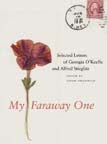
 John Bartram (1699-1777), along with his sons William (1739-1823) and John, Jr. (1743-1812), are best known for their pioneering work as botanists, naturalists, and explorers. Over the course of their lifetimes, they traveled north to Lake Ontario, south to Florida, and west to the Mississippi River, collecting native plant specimens along the way. These they brought home to Pennsylvania and cultivated in their modest garden along the banks of the Schuylkill River. There they grew as many as 2000 types of plants, shipping specimens on request to clients throughout the colonies (men such as Washington, Jefferson and Franklin), and on to England. In 1765 he was named by George III as the King's Botanist for North America.
John Bartram (1699-1777), along with his sons William (1739-1823) and John, Jr. (1743-1812), are best known for their pioneering work as botanists, naturalists, and explorers. Over the course of their lifetimes, they traveled north to Lake Ontario, south to Florida, and west to the Mississippi River, collecting native plant specimens along the way. These they brought home to Pennsylvania and cultivated in their modest garden along the banks of the Schuylkill River. There they grew as many as 2000 types of plants, shipping specimens on request to clients throughout the colonies (men such as Washington, Jefferson and Franklin), and on to England. In 1765 he was named by George III as the King's Botanist for North America.The house, often only a footnote in the Bartram story, is fascinating. It grew organically, much like the garden, expanding as needed to meet the needs of the family. Built almost entirely from Wissahickon schist (a local Pennsylvania stone), the two-story building began in 1728 as a simple four-room, single-story structure. As fashion and fortunes changed, the house was expanded. In keeping with the Bartrams' Quaker faith, it is intentionally modest, ornamented only by the odd, interesting stone carvings and columns, created by John Bartram himself.
In the mid 19th century, at a time when the banks of the Schuylkill were rapidly becoming the industrial cesspool of Philadelphia, many old houses were abandoned and torn down to make way for factories. Miraculously, Bartram's house and garden were saved through the efforts of a series of fore-thinking men. Today, the house stands as it did almost three centuries ago, along with a stone barn built in 1775 (thought to be the oldest in Philadelphia), and a flowering Yellowwood tree sent to William Bartram by the explorer André Michaux.
(a photo set on flickr)
UPDATE: Click over to the American Garden History blog for a bit more Bartram.

















13 comments:
Thank you for this post. How amazing that these buildings still stand. I was unfamiliar with John Bartram and his great contribution to horticulture until I read Andrea Wulf's The Brother Gardeners. I highly recommend it.
Susan ~ I am glad you liked the post! And, yes, "The Brother Gardeners" is a great book. You might also be interested by "William Bartram, The Search for Nature's Design: Selected Art, Letters, and Unpublished Writings" which just came out in February. I picked up a copy this weekend and look forward to delving in.
As it happens, I was there last weekend. The house isn't much, as you say, but the stone carvings and window surrounds are very charming.
Did you see the stone cider press carved out of bedrock down by the river?
Ancient ~ yes! I loved the cider press. I have a photo yet to be uploaded.
Just posted a link from the American Garden History blog to this posting & to your Flickr tour. Well done!
I love the stonework on the house and the garden is great!
BWS ~ thank you for fleshing out the Bartram story. I added a link to this post to AGH.
How It Grows ~ the stone work is marvelous. So unusual!
Wonderful! KDM
Great weekend Janet. Thank you so much!
Thanks for all the wonderful detail shots of the house. It is such a treasure, being built of local stone and decorated with all those carvings. I am familiar with the house and the Bartrams, but have rarely seen more than the front view.
Anna ~ what a glorious outing! Especially our moment in the sun with a cold birch beer.
Ms. Wis ~ I hope you can make it there some day. Just the place to revel in garden history!
my brother is going to a wedding there next weekend! how amazing is that! i sent him your post as preparation!
Being a great lover of garden art, I enjoyed going through your blog. keep it up the good work.
Post a Comment